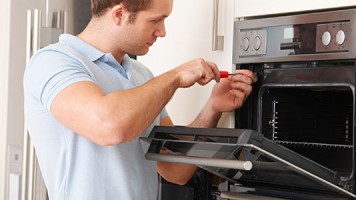F50 and F51 Errors indicate that the RPS sensor is not reading that the tub is spinning, or the tub is not spinning correctly. You can put the machine into a Manual diagnostic mode to check the motor and electrical connections. (The Press and hold for 3 seconds, release for 3, Press and hold for 3, release for 3, press and hold for 3 seconds routine) This test will help determine if the rotor and RPS sensors are eccentrically functioning correctly. You will also want to check to make sure there are no obstructions between the basket and tub. If the tub feels like there is too much resistance when spinning manually, you may want to remove the inner basket and check for clothing or other obstructions lodged between the tubs tying up the basket on spin. There was an update to the RPS Sensor since the original release it does come with a new harness, plate, and instructions for what was changed.
If you need more help with getting the machine into that diagnostic mode let us know and we will get you some more details. 🙂
Good luck!
- AV Repair Help answered 10 years ago
- You must login to reply
For an F51 Or F50 error, they suggest:
TEST #3 Motor Circuit
This test checks the wiring to the motor and rotor position sensor; and the motor and rotor position sensor themselves. NOTE: Drain water from tub.
1. See Activation of Manual Diagnostic Test Mode, and check the motor and electrical connections by performing the Agitate and Spin tests under Manual: Motor. The following steps assumes that this stepfailed.
2. Unplug washer or disconnect power.
3. Check to see if basket will turn freely. If basket turns freely, go to step 4. If basket does not turn freely, determine what is causing the mechanical
friction or lock up.
4. Remove the console to access the machine/ motor control assembly. See Accessing& Removing the Electronic Assemblies.
5. Visually check that the P5 and P10 connectors are inserted all the way into the machine/motor control. If visual checks pass, go to step 6.
If visual checks fail, reconnect P5 and P10 and repeat step 1.
6. With an ohmmeter, check for 16 ohms resistance at the P5 connector between pins P5-1 and P5-2, and also between pins P5-1 and P5-3. Also measure the resistance at the P10 connector between pins P10-1 and P10-7 and verify that the resistance is within the range shown in the wiring diagram on page 7-1.
If the resistance is correct, go to step 11. If the P5 connector resistance is much higher than 16 ohms, or the P10 connector resistance is out of range, go to
step 7.
7. Tilt machine forward to access the bottom of the machine and the drive motor area. See Figure 1 on page 6-13. Remove the motor bolt, then the motor cover to access the motor connections. See Figure 2 on page 6-13.
8. Visually check the mounting bracket and electrical connections to the motor and rotor position sensor board. If visual check passes, go to step 9.
If visual check fails, reconnect the electrical connections, reassemble stator and motor cover and repeat step 1.
9. With an ohmmeter, check for continuity between all pins on the P10 machine/motor control connector and the motor rotor position sensor (RPS) connector. See Figures 2 and 4, pages 6-13 and 6-16. If there is continuity, go to step 11. If there is no continuity, replace the lower machine harness.
10. With an ohmmeter, check for continuity between all pins on the P5 machine/motor control connector and the drive motor connector. If there is continuity, replace the drive motor. If there is no continuity, replace the lower machine harness.
11. The drive motor and lower harness are good. Replace the motor RPS board and perform the Diagnostics test in step 1 to verify repair.
12. If the Diagnostics motor test in step 1 failed, then the machine/motor control has failed: Unplug the washer or disconnect power. Replace the machine/motor control assembly. Perform the Motor Diagnostics in step 1 to verify repair.
- AV Repair Help answered 10 years ago
- You must login to reply
Please login first to submit.


